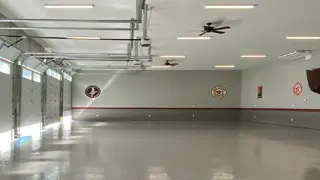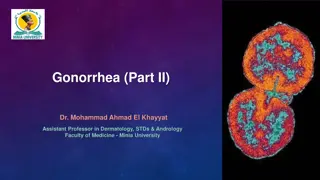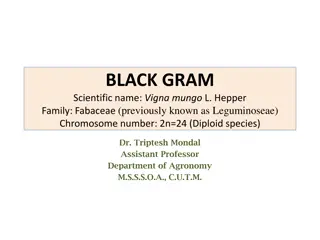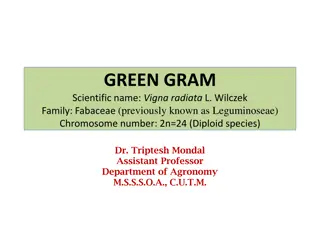Understanding the Gram Stain Technique in Bacteriology
The Gram stain technique is a vital tool in bacteriology, dividing bacteria into Gram-positive and Gram-negative groups based on cell wall composition. This differential staining method involves primary staining with crystal violet, followed by a mordant treatment, decolorization, and counterstaining with safranin. The differences between Gram-positive and Gram-negative bacteria lie in their cell wall structure, leading to distinct color appearances under the microscope.
Download Presentation

Please find below an Image/Link to download the presentation.
The content on the website is provided AS IS for your information and personal use only. It may not be sold, licensed, or shared on other websites without obtaining consent from the author. Download presentation by click this link. If you encounter any issues during the download, it is possible that the publisher has removed the file from their server.
E N D
Presentation Transcript
Principle The Gram stain is the most useful and widely employed differential stain in bacteriology. It divides bacteria in to two groups (Gram positive and Gram negative bacteria. The primary stain is crystal violet. It is followed by treatment with an iodine solution , which function as a mordant , that is , it increase the interaction between the bacterial cell and the dye .
The smear than decolorized by washing with an agent such as 95% ethanol. Gram positive bacteria retain the crystal violet-iodine complex when washed with the decolorizer where as gram negative bacteria lose their crystal violet-iodine complex and become colorless. Finally , the smear is counter stianed with a basic dye, different in color than crystal violet. This is safranin, the safranin will stain the colorless gram negative bacteria pink but does not alter the dark purple color of gram positive bacteria.
Difference between Gram positive and Gram negative bacteria Gram positive bacteria Simple cell wall Gram negative bacteria More complex cell wall Thick peptidoglycan cell wall layer Thin peptidoglycan cell wall layer No outer lipopolysaccharide wall layer Retain crystal violat/iodine outer lipopolysaccharide wall layer Retain safranin Appear (Blue/Purple) Appear (Pink/Red)
Staphylococcus aureus Escherichia coli























